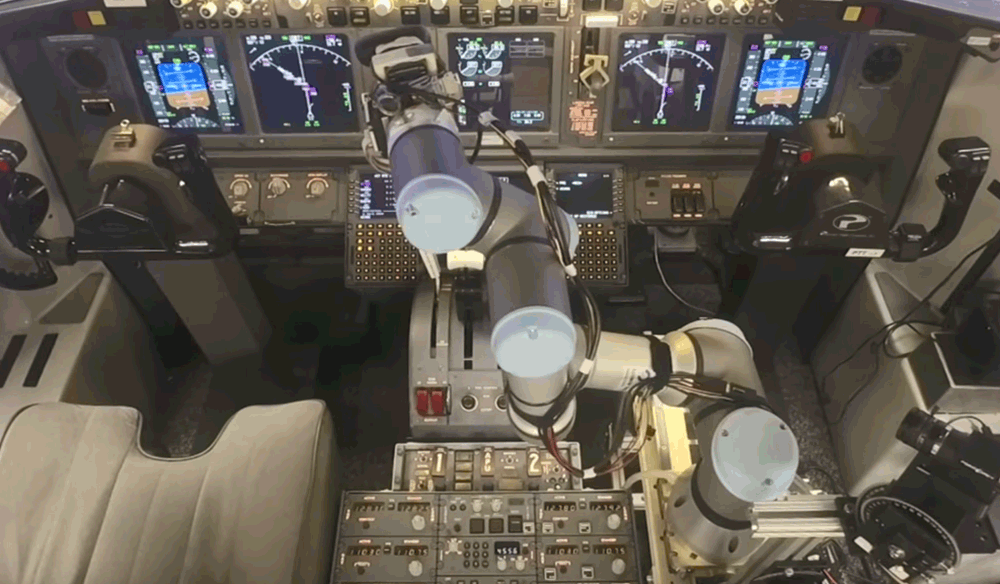
Otto the Autopilot this is not, but Aurora Flying Sciences' Aircrew Labor In-cockpit Automation System (ALIAS) reached a significant milestone this week with the simulated landing of a Boeing 737-800NG. The latest accomplishment of this "robotic co-pilot" took place at the John A. Volpe National Transportation Systems Center in Massachusetts, as ALIAS proved it is capable of using the 737's auto-landing system to land the aircraft safely, should the pilot become incapacitated.
The purpose of the ALIAS technology, which is being developed for the Defense Advanced Research Projects Agency (DARPA), is to "function as a second pilot in a two-crew aircraft," allowing for standard and even improved aircraft performance, while reducing individual crew operations and workload, lowering costs, and simplifying training. Even more, the portable hardware and software would allow for use in a wide variety of civilian and military aircraft.
“Having successfully demonstrated on a variety of aircraft, ALIAS has proven its versatile automated flight capabilities,” said John Wissler, Aurora’s Vice President of Research and Development. “As we move towards fully automated flight from take-off to landing, we can reliably say that we have developed an automation system that enables significant reduction of crew workload.”
Obviously, such technology raises concerns that pilots should be fearing the day that their seats in the cockpit are given to robotic arms. But that isn't what ALIAS was created for, at least according to Aurora. Instead, the system was designed to "extend rather than replace human capabilities," according to a 2015 New York Times article. An Aurora program manager further explained that this technology would "use the humans for what the humans are really good at and the automation for what the automation is really good at."
So far, in addition to the 737, ALIAS has performed successful flight scenarios in Diamond DA42, UH-1 Iroquois, and DHC-2 Beaver aircraft, as well as the Cessna 208 Caravan, seen below.

Sign-up for newsletters & special offers!
Get the latest FLYING stories & special offers delivered directly to your inbox






